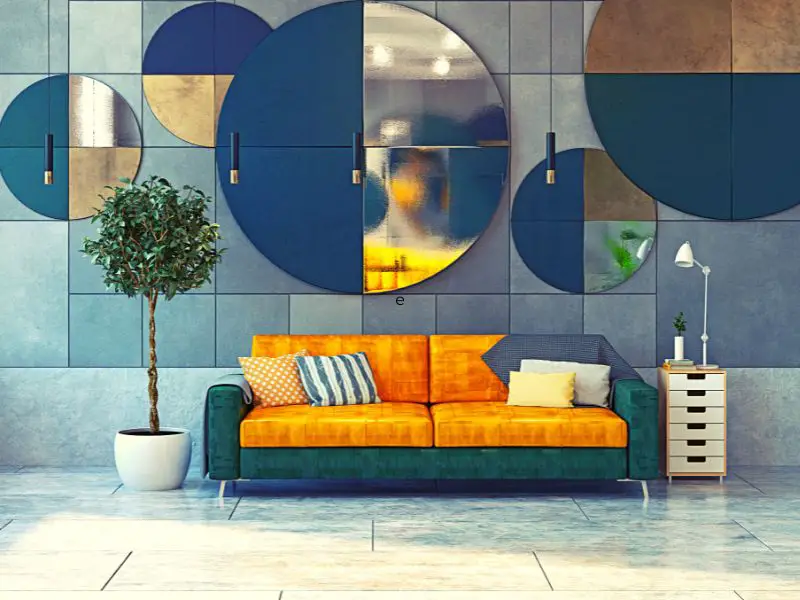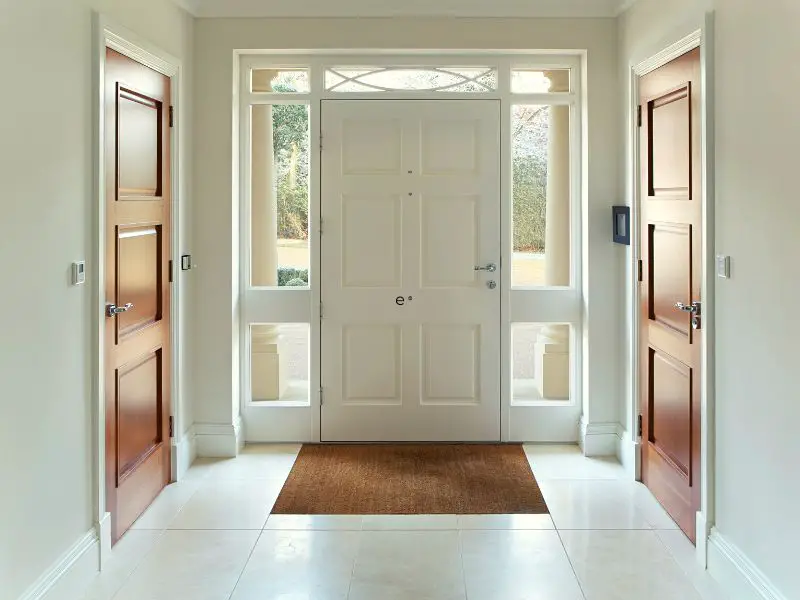Sustainable design is a term that has been around for many years, but recently it has gained more and more momentum. Many people are seeking ways to live more sustainably, whether leaving a smaller environmental footprint or conserving resources for future generations. There is also an unusual demand for environmentally friendly and sustainable interior design, so you’ll likely come across the term at some point.

While sustainability has been a buzzword, sustainable interior design has received much attention. There are growing concerns about water and air quality, climate change, and resource shortages. The more people talk about sustainability in a general sense, the more they think about its environmental impact. Moreover, there is a rising demand for products that reduce our ecological footprint. This article will introduce what “sustainable interior design” means, what products are sustainable, and the principles of sustainable interior design.
Let’s go!
What Is Sustainable Design?
Interior design is a form of art, science, and business all rolled into one. The term “sustainable” refers to an activity that can be continued for an indefinite period in the future with no adverse effects. In other words, sustainable interior design means maintaining health, safety, and comfort without being detrimental to the environment. This can be done by turning dead spaces into valuable areas or introducing new technologies that make your house more energy-efficient and environmentally friendly.
In a holistic approach, sustainable interior design encourages us to think more widely about what we bring into our homes and provides more options for styling our interiors for beauty and purpose.
What Are the Principles of Sustainable Interior Design?
Principle #1: Designing to Minimize Waste
Interior designers hold a great deal of power when it comes to minimizing waste. They have a significant obligation to behave in an environmentally responsible manner. Because there are only so many valuable resources in our world, it is no longer acceptable to have the mindset of tossing out things as soon as they go out of style and replacing them with newer designs.
Minimizing waste is a goal in any home at all times, yet while it’s easiest to focus on what to throw away, there are many other areas where we can cut down on waste generation. Being mindful of how much we use and our habits with products is a great place to start. A small change like switching from plastic shower curtains to fabric alternatives can save us from using unnecessary amounts of plastic.
Principle #2: Designing to Reduce Environmental Impact
Cutting our impact on the environment is the ultimate goal of sustainable design. To minimize our impact, we need to consider what materials are in the products we choose and how they can be recycled or reused in the future.
Use organic materials like wood and stone for furniture, features, and flooring since they have a nice appearance, are effective at retaining heat, and their manufacturing does not require a massive amount of energy consumption or harmful waste. Bamboo is an excellent example of a renewable material that transforms into attractive and environmentally friendly furniture. Bamboos also grow fast, and replanting is easy.

Principle #3: Designing for Energy Efficiency
Using energy is one of the most significant factors contributing to climate change. Because of energy use, buildings are accountable for a substantial portion of the global total greenhouse gas emissions. Architects and interior designers can do a huge deal to enhance the energy efficiency of a building. They can accomplish primarily this by reducing the amount of energy required for heating, lighting, operating appliances, and so on and by providing renewable, non-carbon-based energy to the building.
Related: Net Zero Emissions, Top Sustainable Technologies, Is It Safe to Walk On Solar Panels?
Principle #4: Design That Can Last for a Long Time
Designers need to consider the lifespan of any materials they plan to use, especially those that are easily exposed to a lot of wear and tear (such as flooring).
When planning for longevity, the objective is to create long-lasting and timeless environments and resist the temptation to revamp the design of a space every few years. Suppose you want to create something that will stand the test of time. In that case, it is important to prioritize quality over quantity, stick to timeless designs rather than following current trends, and prioritize usability and minimalism over embellishments.
Principle #5: Design for a Healthy Atmosphere
It is necessary to have clean air, effective heating (or air conditioning), adequate lighting, and adequate acoustics to produce a healthy atmosphere. You probably don’t recognize the interior of your house or workplace as a place that contributes to pollution. However, it might be surprising for you to learn how harmful some of your furniture or products are. You may avoid this by selecting pieces of furniture that are crafted from materials that emit minimal levels of VOCs (volatile organic compounds).
What Are the Materials Good for Sustainable Interior Designing?
Recycled Steel
Recycled steel is an excellent material for sustainable interior design. It is used abundantly in modern homes because of its versatility and durability. Steel has the appearance of a natural material, such as wood or stone, and it can create everything from kitchen island countertops to floors and even walls.
Hemp
Hemp is another excellent option with attractive qualities without adverse side effects. The way it’s harvested requires a significantly smaller amount of water than cotton, making it an environmentally friendly option.
Sheep’s Wool
Sheep’s wool is the perfect choice for those who want an elegant and environmentally friendly material. It can be absorbed by the earth naturally without further processing, and it appears to have a similar aesthetic quality to cotton.
Reclaimed Wood
This wood is usually taken from old structures and then repurposed in various ways. It is also an excellent option for those who want to create a rustic aesthetic in their home.

Bamboo
By choosing bamboo furniture, you are making an environmentally-friendly choice. A single bamboo plant can be cut down and replanted many times.
Cork
Cork is another excellent resource for building environmentally friendly interior designs because it is a renewable resource.
Felt
Felt is a type of textile made by matting, condensing, and pressing fibers together. It has a minimal environmental effect and is fully biodegradable. Its use is in making draperies and furnishings.
Clay
Clay flooring is one of the most common natural flooring options available today. It is also an excellent material for creating fire pits and barbeque pits, as well as tables and other pieces of furniture.
What Are the Common Myths of Sustainable Interior Design?
Myth #1. Sustainable Interior Design Will Cost a Lot
Another widespread misconception regarding sustainable design is that it comes at a significantly higher cost than other design types. Even though environmentally friendly choices may have a higher initial cost, in the long run, the money saved on energy costs and the increased longevity of these solutions typically makes up more than the initial expenses.
Myth #2. Sustainable Interior Design Sacrifices Style
People frequently feel that sustainably constructed buildings are inherently harsh, drab, and unsightly. This perception is entirely false. Many environmentally friendly designs are unquestionably beautiful. Sustainability is about how resources are produced and utilized, not how they appear. Whether you’re a disco babe from the 1970s or living in the year 2080, there’s a sustainable interior design perfect for your home.

Myth #3. Sustainable Interior Designing Is Just a Marketing Strategy
Although we cannot deny that some individuals may use this as a simple marketing tool, LEED certifications involve a substantial amount of study and research. LEED architects and designers know which materials and finishes are healthy for you and the environment. While designing with sustainability in mind, it is essential to consider materials, manufacturing, and transportation. In addition to buying from local suppliers, sustainable design also involves efficient manufacturing and transportation.
Author’s Note
In conclusion, sustainable interior design is a new way of looking at the world that requires thoughtful consideration. As it becomes more of normative practice, we can expect the benefits of this design trend to become even more apparent in all aspects of society: economy, culture, and environment. Architectural barriers will begin to fade away as we find new ways to connect with our surroundings and learn how to work together for the greater good of humanity.
Moreover, you should not think of sustainable design as something that sacrifices style or personal taste. Today, it is an exciting and dynamic process that has brought a new era of beautiful and innovative creations to the world of interior design. We hope that this article has taught you some of the building blocks for sustainable interior design and that it has given you a greater appreciation for this form of design. Thank you for reading!


1 thought on “Sustainable Interior Design: A Trend Worthy of Consideration”